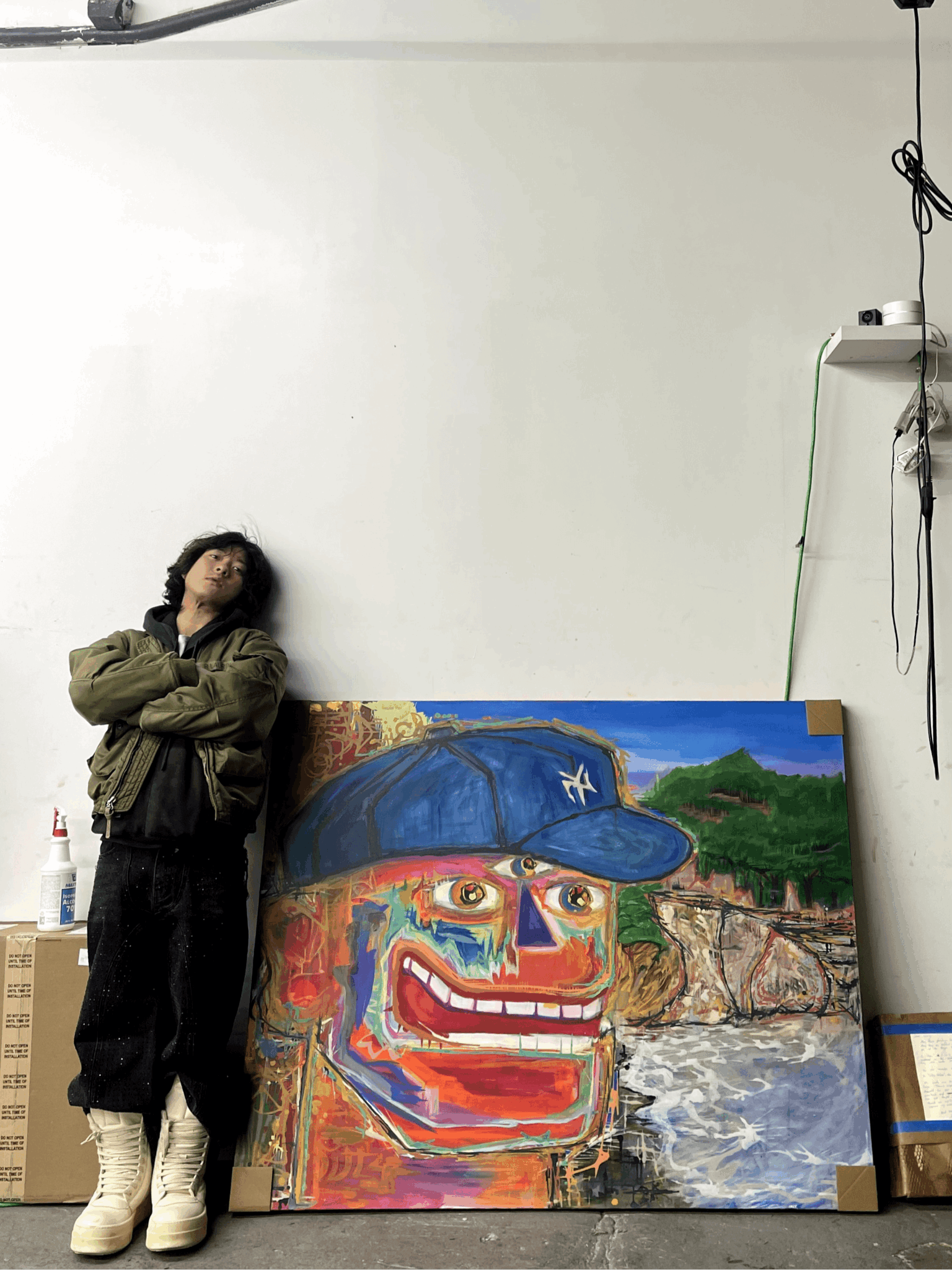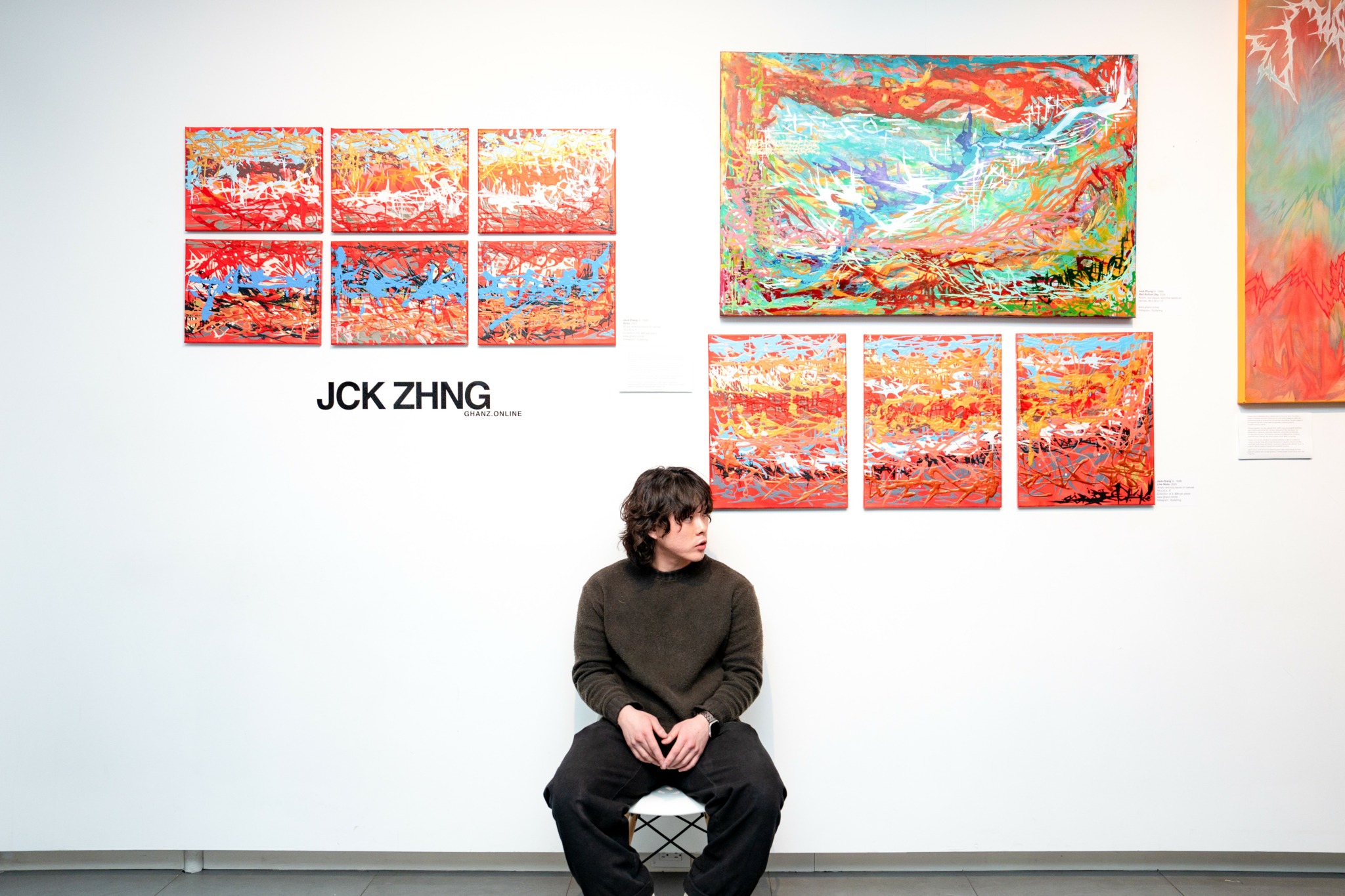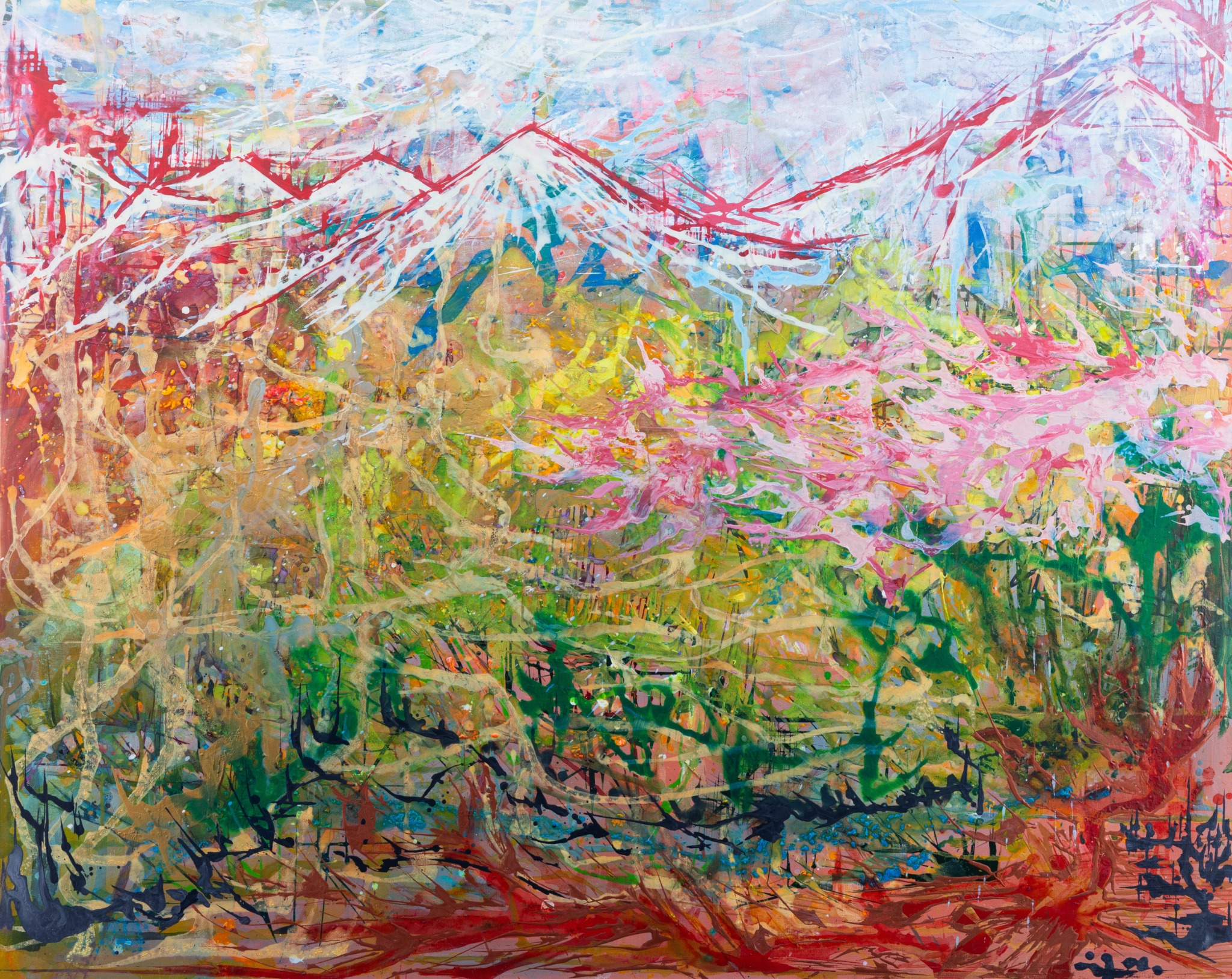We caught up with the brilliant and insightful Jack Zhang a few weeks ago and have shared our conversation below.
Jack, appreciate you joining us today. Did you always know you wanted to pursue a creative or artistic career? When did you first know?
I think the path to becoming an artist wasn’t one big moment—it was a series of phases that kept pulling me in deeper. I grew up going to New York a lot, especially Brooklyn and Manhattan. Just walking those streets as a kid opened my eyes. The graffiti, the murals, the mix of chaos and beauty—it made me feel alive. I didn’t know it then, but that energy stuck with me.
In first grade, I had this phase where I’d pretend to know how to write people’s names in Chinese characters. I’d make these abstract marks that looked like something real, but they were made-up—just flowing from my imagination. Looking back, that was probably the first sign of me tapping into abstract art. That moment made me realize art could grab people’s attention—even if it didn’t “make sense” in the traditional way.
All through elementary school, I was deep into martial arts—specifically Taekwondo—and I kept a drawing book where I practiced wildstyle graffiti lettering. Martial arts taught me discipline, structure, and flow, while graffiti gave me the freedom to be bold and expressive. That balance shaped a lot of who I am today, as both a person and an artist.
In high school, I started exploring fashion. I’d experiment with outfits, sketch designs, and think about how clothes are also a form of visual art. That’s when I really began to understand how much I loved expression—not just through drawing, but through style, color, and how something makes you feel.
Then college came, and that’s when everything clicked. I studied Visual Arts, and being around other creatives pushed me to take things seriously. Seeing how other artists used their voices made me want to dive into my own. I started painting more and more, falling in love with the process—how it felt like meditation, like therapy, like purpose.
There wasn’t a single “aha” moment—it was more like a journey I kept returning to, and eventually, I realized art was where I felt most present, most free, and most me. Pursuing it professionally just became the only path that made sense.

Awesome – so before we get into the rest of our questions, can you briefly introduce yourself to our readers.
I’m Jack Zhang, a visual artist based in New Jersey. I grew up in a small town, but I was lucky to visit New York often because I had family there. Those trips—especially to Brooklyn and Manhattan—were really important to me. The city’s energy, the street art, the culture, it all left a deep impression. Even when I was back home, I carried pieces of that energy with me. The mix of the city’s intensity and my town’s calm still influences how I see and create.
Creativity ran quietly in my family. My dad has always been drawn to jewelry—he’d spend time looking at designs, going to cafes, and browsing bookstores, soaking in inspiration in his own way. My mom used to style hair with care and intention. They might not have called it “art,” but their work was creative, and I learned early on that creativity can live in the everyday.
I was always making things as a kid. In first grade, I’d invent Chinese characters and draw abstract symbols, just for fun. That playful experimentation was probably my first step into abstract art. In elementary school, I practiced martial arts and filled sketchbooks with wildstyle graffiti. The discipline from martial arts and the freedom in graffiti still shape how I paint today.
High school brought a new interest in fashion. I started thinking about how color, texture, and form tell stories. But it wasn’t until college—where I studied Visual Arts—that I really committed to pursuing art. Being around other creatives, learning from them, and exploring different styles helped me find my voice.
Today, I mainly focus on abstract painting. I like to use all sorts of paints—whatever feels right in the moment. Sometimes it’s acrylic, other times it’s oil paint. I’ll even mix in random materials or textures if it adds to the energy of the piece. I enjoy letting the medium respond to what I’m feeling—it keeps the process alive, spontaneous, and rooted in the present.
My art isn’t about solving problems—it’s about creating space. Space for people to pause, feel, and reflect. I don’t want to dictate what someone sees; I want to open a door to their own experience.
What makes my work different is that it comes from a genuine place—shaped by family, culture, movement, and the balance between city energy and small-town quiet. I’m not chasing perfection or trends. I’m here to be honest, to keep growing, and to share good energy through my work.
If my art connects with someone, that means the world to me. At the end of the day, I’m just trying to create something real and let it speak for itself.
Is there something you think non-creatives will struggle to understand about your journey as a creative? Maybe you can provide some insight – you never know who might benefit from the enlightenment.
One thing I think non-creatives often don’t realize is the importance of balance in being an artist. It’s not just about painting or creating when inspiration hits—there’s also the structured side: logistics, planning, business, organizing, promoting. That side doesn’t always get talked about, but it’s just as important.
Over time, I’ve learned how valuable it is to multitask with intention. I don’t try to blend everything at once—I carve out specific time for creativity, where I can get into flow and let the ideas move freely. And then I make separate space for the more structured work. That includes emails, applications, networking, all the behind-the-scenes things that support the art itself.
I’ll be real—I’m still growing in that area. The business side didn’t come as naturally to me, but I’m getting better at it and learning to appreciate how it helps bring everything together. I know that if I want this life to be sustainable, I have to strengthen both sides—creative and strategic. It’s not always easy, but I’m committed to showing up for both.

We’d love to hear a story of resilience from your journey.
There have been a few moments when I had to lean into resilience, but one that really stands out happened not long after I finished college. I was in that foggy in-between space, trying to find my direction as an artist, figuring out how to build something real without a clear path or much structure. It was easy to feel overwhelmed and question whether I could sustain this over the long term.
Then a friend I had connected with on Instagram reached out and commissioned me to create a custom, freehanded piece. That moment meant a lot. Not just because it was support—but because it was trust. Someone believed in my vision enough to give me full creative freedom. That piece became a turning point. It was in that process that I really started to hone in on my style—working with abstract linework, letting the flow guide the form, and tapping into something that felt honest and uniquely mine.
It reminded me that the work doesn’t have to be perfect—it just has to be real. That commission helped ground me, and gave me momentum when I really needed it. It reminded me that even when things feel uncertain, connection through art is powerful—and sometimes that’s all you need to keep going.
Resilience for me looks like staying in motion, even in the quiet seasons. It’s showing up, experimenting, and trusting that the growth is happening, even when it’s not obvious yet. That one commission helped me believe in the direction I was headed.
Contact Info:
- Website: https://www.ghanz.online
- Instagram: jckzhng


